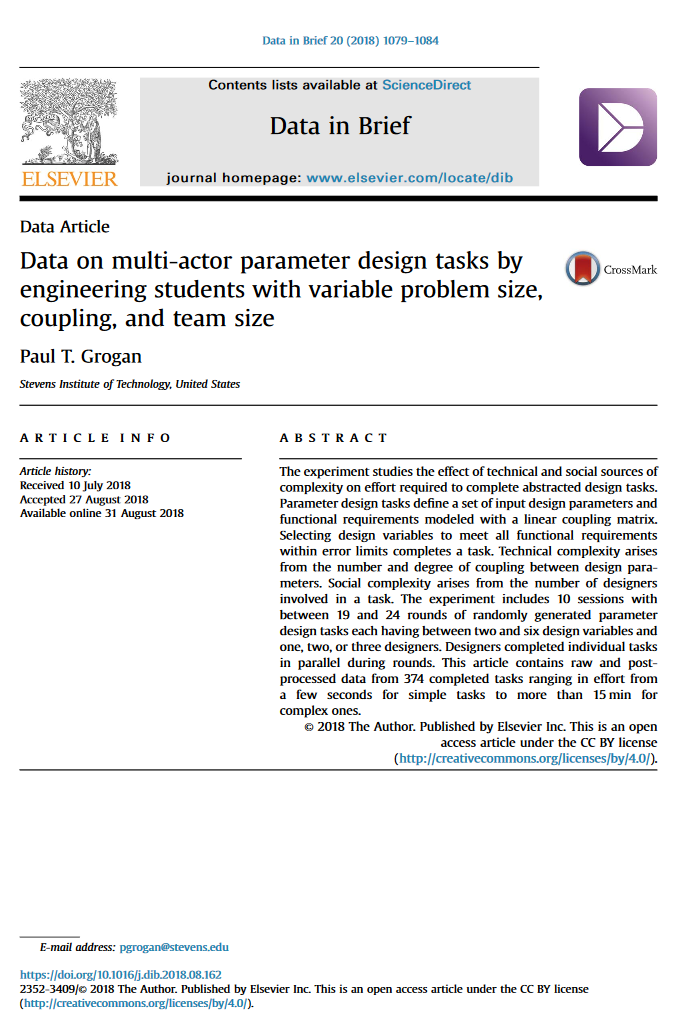Two papers were presented this week at the ASME International Design Engineering Technical Conferences & Computers and Information in Engineering Conference (IDETC/CIE) in Quebec City, Canada.
Toward a Model-based Experimental Approach to Assessing Collective Systems Design Processes
A. Valencia Romero and P.T. Grogan in Design Theory Methodology (DTM)
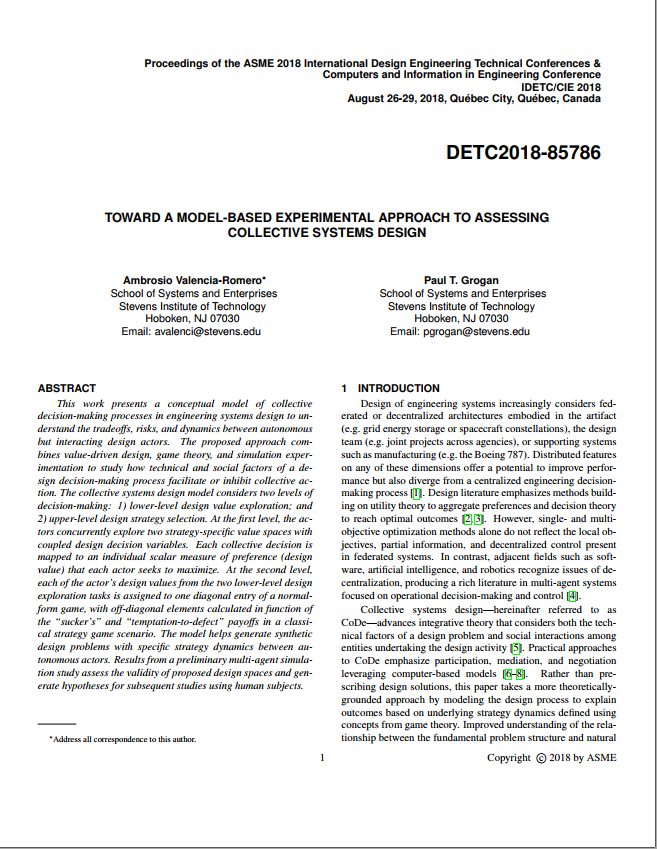
Abstract: This work presents a conceptual model of collective decision-making processes in engineering systems design to understand the tradeoffs, risks, and dynamics between autonomous but interacting design actors. The proposed approach combines value-driven design, game theory, and simulation experimentation to study how technical and social factors of a design decision-making process facilitate or inhibit collective action. The collective systems design model considers two levels of decision-making: 1) lower-level design value exploration; and 2) upper-level design strategy selection. At the first level, the actors concurrently explore two strategy-specific value spaces with coupled design decision variables. Each collective decision is mapped to an individual scalar measure of preference (design value) that each actor seeks to maximize. At the second level, each of the actor’s design values from the two lower-level design exploration tasks is assigned to one diagonal entry of a normal-form game, with off-diagonal elements calculated in function of the “sucker’s” and “temptation-to-defect” payoffs in a classical strategy game scenario. The model helps generate synthetic design problems with specific strategy dynamics between autonomous actors. Results from a preliminary multi-agent simulation study assess the validity of proposed design spaces and generate hypotheses for subsequent studies using human subjects.
Operational and Strategic Decisions in Engineering Design Games
P.T. Grogan and A.E. Bayrak in Design Automation Conference (DAC)
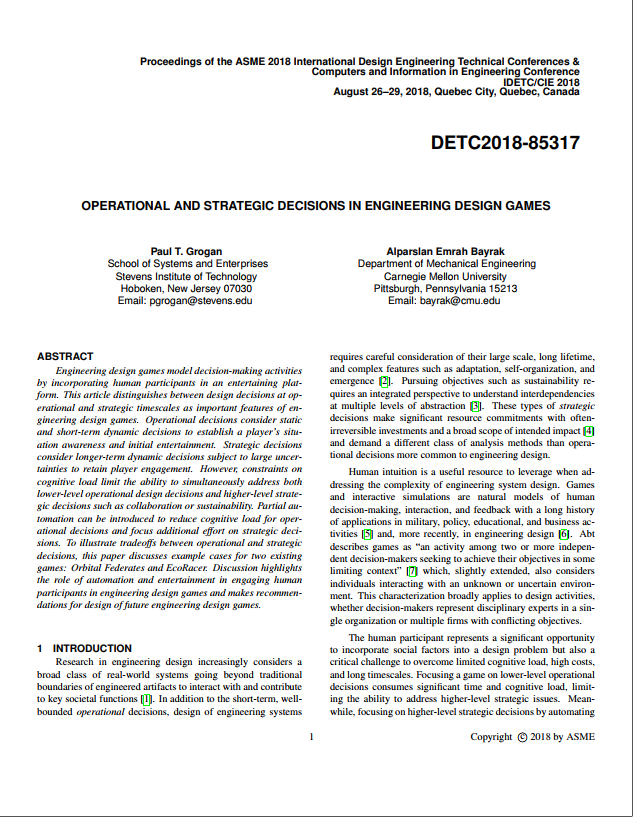
Abstract: Engineering design games model decision-making activities by incorporating human participants in an entertaining platform. This article distinguishes between design decisions at operational and strategic timescales as important features of engineering design games. Operational decisions consider static and short-term dynamic decisions to establish a player’s situation awareness and initial entertainment. Strategic decisions consider longer-term dynamic decisions subject to large uncertainties to retain player engagement. However, constraints on cognitive load limit the ability to simultaneously address both lower-level operational design decisions and higher-level strategic decisions such as collaboration or sustainability. Partial automation can be introduced to reduce cognitive load for operational decisions and focus additional effort on strategic decisions. To illustrate tradeoffs between operational and strategic decisions, this paper discusses example cases for two existing games: Orbital Federates and EcoRacer. Discussion highlights the role of automation and entertainment in engaging human participants in engineering design games and makes recommendations for design of future engineering design games.
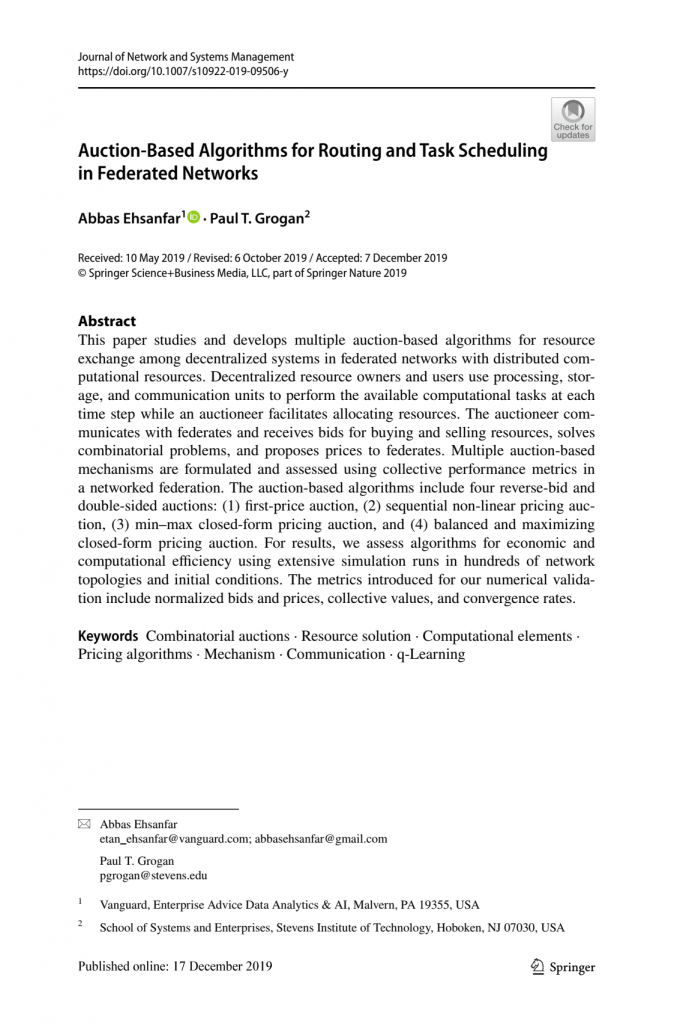


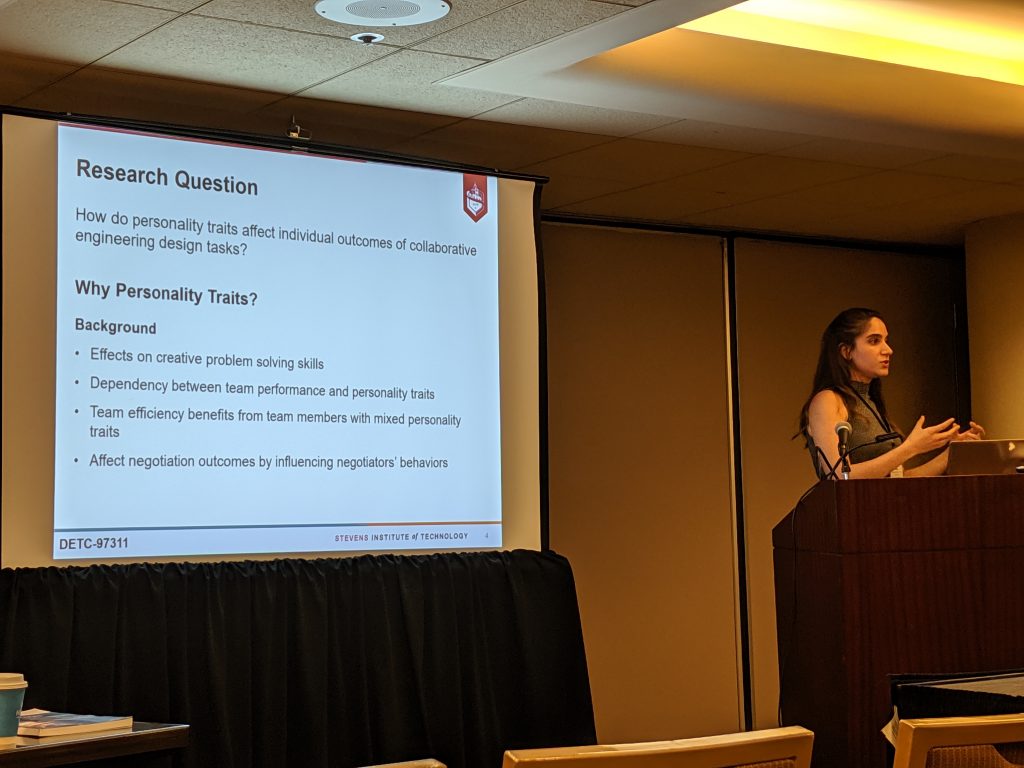

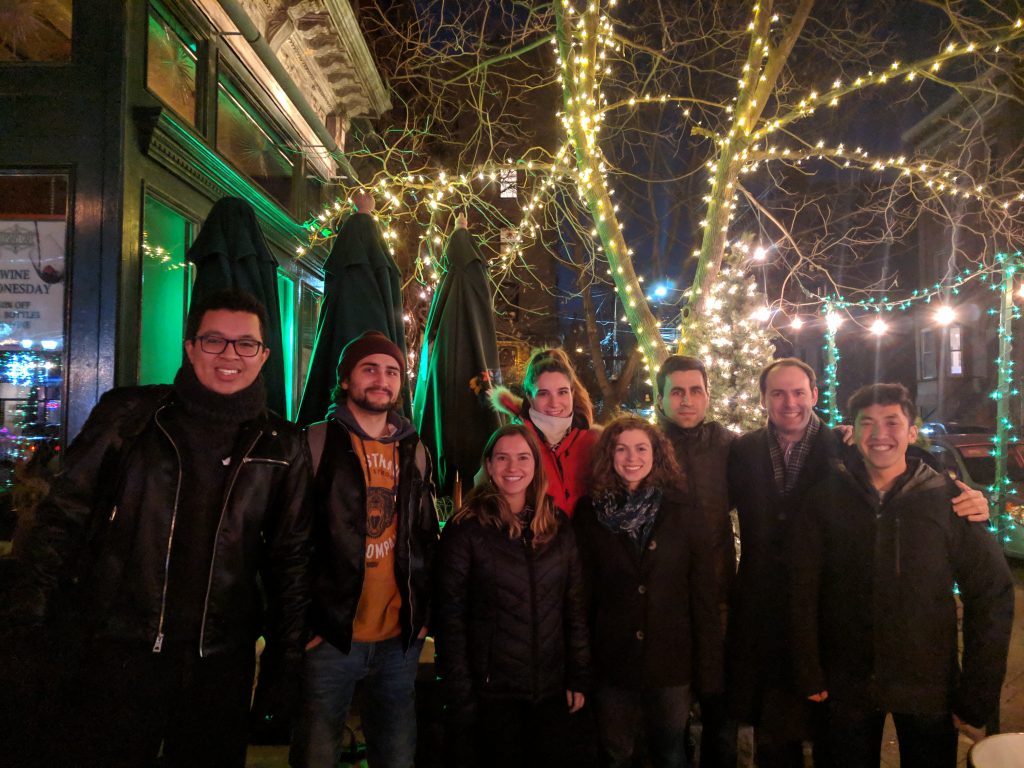
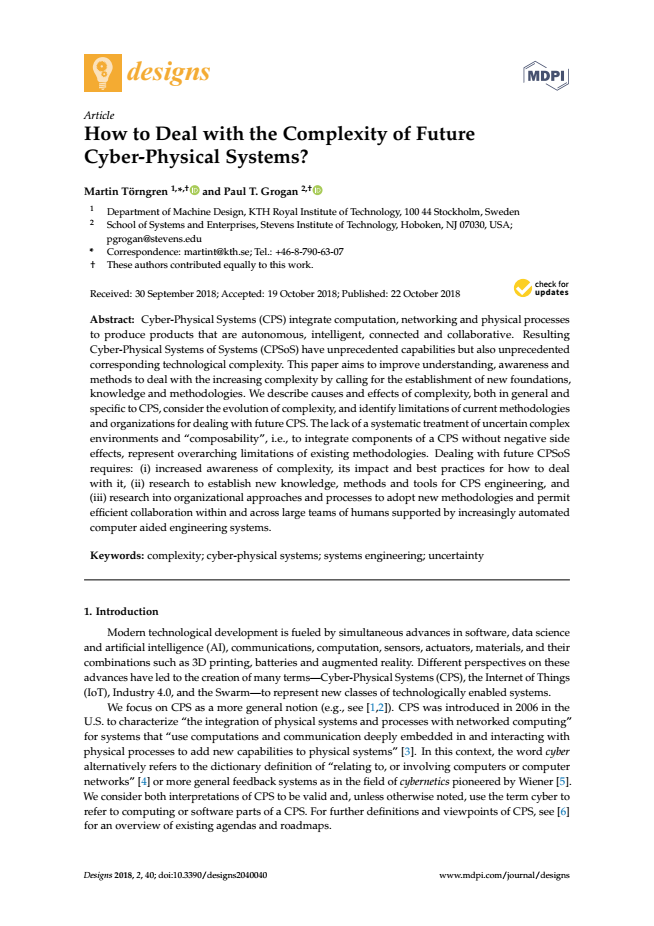 Abstract: Cyber-Physical Systems (CPS) integrate computation, networking and physical processes to produce products that are autonomous, intelligent, connected and collaborative. Resulting Cyber-Physical Systems of Systems (CPSoS) have unprecedented capabilities but also unprecedented corresponding technological complexity. This paper aims to improve understanding, awareness and methods to deal with the increasing complexity by calling for the establishment of new foundations, knowledge and methodologies. We describe causes and effects of complexity, both in general and specific to CPS, consider the evolution of complexity, and identify limitations of current methodologies and organizations for dealing with future CPS. The lack of a systematic treatment of uncertain complex environments and “composability”, i.e., to integrate components of a CPS without negative side effects, represent overarching limitations of existing methodologies. Dealing with future CPSoS requires: (i) increased awareness of complexity, its impact and best practices for how to deal with it, (ii) research to establish new knowledge, methods and tools for CPS engineering, and (iii) research into organizational approaches and processes to adopt new methodologies and permit efficient collaboration within and across large teams of humans supported by increasingly automated computer aided engineering systems.
Abstract: Cyber-Physical Systems (CPS) integrate computation, networking and physical processes to produce products that are autonomous, intelligent, connected and collaborative. Resulting Cyber-Physical Systems of Systems (CPSoS) have unprecedented capabilities but also unprecedented corresponding technological complexity. This paper aims to improve understanding, awareness and methods to deal with the increasing complexity by calling for the establishment of new foundations, knowledge and methodologies. We describe causes and effects of complexity, both in general and specific to CPS, consider the evolution of complexity, and identify limitations of current methodologies and organizations for dealing with future CPS. The lack of a systematic treatment of uncertain complex environments and “composability”, i.e., to integrate components of a CPS without negative side effects, represent overarching limitations of existing methodologies. Dealing with future CPSoS requires: (i) increased awareness of complexity, its impact and best practices for how to deal with it, (ii) research to establish new knowledge, methods and tools for CPS engineering, and (iii) research into organizational approaches and processes to adopt new methodologies and permit efficient collaboration within and across large teams of humans supported by increasingly automated computer aided engineering systems.